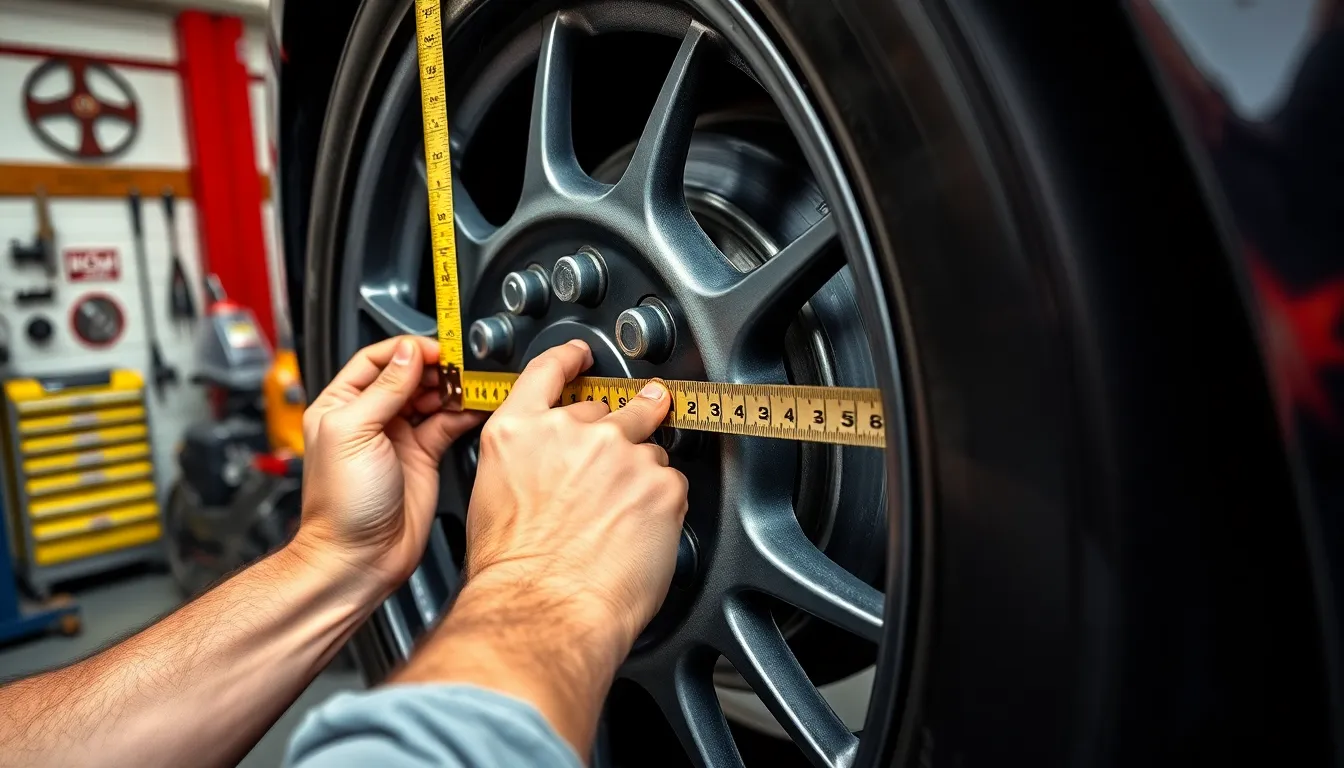Ever wondered why your dream wheels don’t fit your car? The answer often lies in something called the wheel bolt pattern – and it’s easier to figure out than you might think.
We’ve all been there: you spot the perfect set of rims online or at the auto parts store only to discover they won’t bolt onto your vehicle. Understanding your wheel bolt pattern is crucial for safe driving and proper wheel fitment. This measurement determines which wheels will actually work with your car’s hub assembly.
Whether you’re upgrading to aftermarket wheels planning a tire replacement or simply curious about your vehicle’s specifications we’ll show you exactly how to measure and identify your bolt pattern. You don’t need expensive tools or professional help – just a few minutes and basic measuring equipment you probably already have at home.
What Is a Wheel Bolt Pattern
A wheel bolt pattern represents the arrangement of bolt holes on your vehicle’s wheel hub that secure the wheel to the axle. This critical measurement consists of two components: the number of bolt holes and the diameter of the circle they form when connected. Most vehicles use either 4, 5, 6, or 8 bolt configurations depending on the vehicle type and size.
The bolt pattern determines which aftermarket wheels fit your exact vehicle model. Manufacturers design each vehicle with a unique bolt pattern to ensure proper weight distribution and structural integrity. Attempting to install wheels with an incorrect bolt pattern creates dangerous driving conditions and can lead to wheel failure.
We measure bolt patterns using a standard format that combines the number of bolts with the circle diameter. Common patterns include 5×114.3mm for many sedans, 5x120mm for BMW vehicles, and 6×139.7mm for trucks. The measurement appears as “number of bolts x diameter in millimeters” for metric systems or “number of bolts x diameter in inches” for imperial systems.
Different vehicle categories typically use exact bolt pattern ranges:
- Compact cars: 4x100mm or 5x100mm patterns
- Mid-size sedans: 5×114.3mm or 5x112mm patterns
- Luxury vehicles: 5x120mm or 5x130mm patterns
- Light trucks: 6×139.7mm or 6x135mm patterns
- Heavy-duty trucks: 8×165.1mm or 8x170mm patterns
The bolt pattern directly affects wheel compatibility across different manufacturers and vehicle models. Even vehicles from the same manufacturer can have different bolt patterns based on the exact model year or trim level. Understanding your vehicle’s exact bolt pattern prevents costly purchasing mistakes and ensures optimal wheel performance.
Why Knowing Your Bolt Pattern Matters

Understanding your wheel bolt pattern prevents expensive purchasing mistakes when selecting aftermarket wheels. Incorrect bolt patterns create unsafe driving conditions because wheels won’t properly secure to your vehicle’s hub assembly.
Safety becomes the primary concern when wheels don’t match your vehicle’s specified bolt pattern. Loose or improperly fitted wheels can detach while driving, causing catastrophic accidents. The bolt pattern ensures proper weight distribution across all mounting points, maintaining structural integrity during acceleration, braking, and cornering.
Financial protection represents another crucial benefit of knowing your exact bolt pattern specifications. Returns and exchanges for incorrectly sized wheels often include restocking fees and shipping costs. Many online retailers charge 15-25% restocking fees for custom or special-order wheels that don’t fit properly.
Performance optimization depends on precise bolt pattern matching for your vehicle’s suspension geometry. Wheels with incorrect bolt patterns may cause vibrations, uneven tire wear, and compromised handling characteristics. The Pitch Circle Diameter (PCD) affects how forces transfer from the wheel to the suspension components.
Compatibility verification becomes essential when upgrading from factory wheels to aftermarket options. Different manufacturers use varying bolt patterns even within the same vehicle class. BMW vehicles typically use 5x120mm patterns, while many Honda and Toyota models use 5×114.3mm configurations.
Time savings occur when you know your bolt pattern before shopping for new wheels. Research shows that 60% of wheel returns happen due to incorrect bolt pattern measurements. Having this information eliminates guesswork and streamlines the selection process for compatible wheel options.
Methods to Find Your Wheel Bolt Pattern
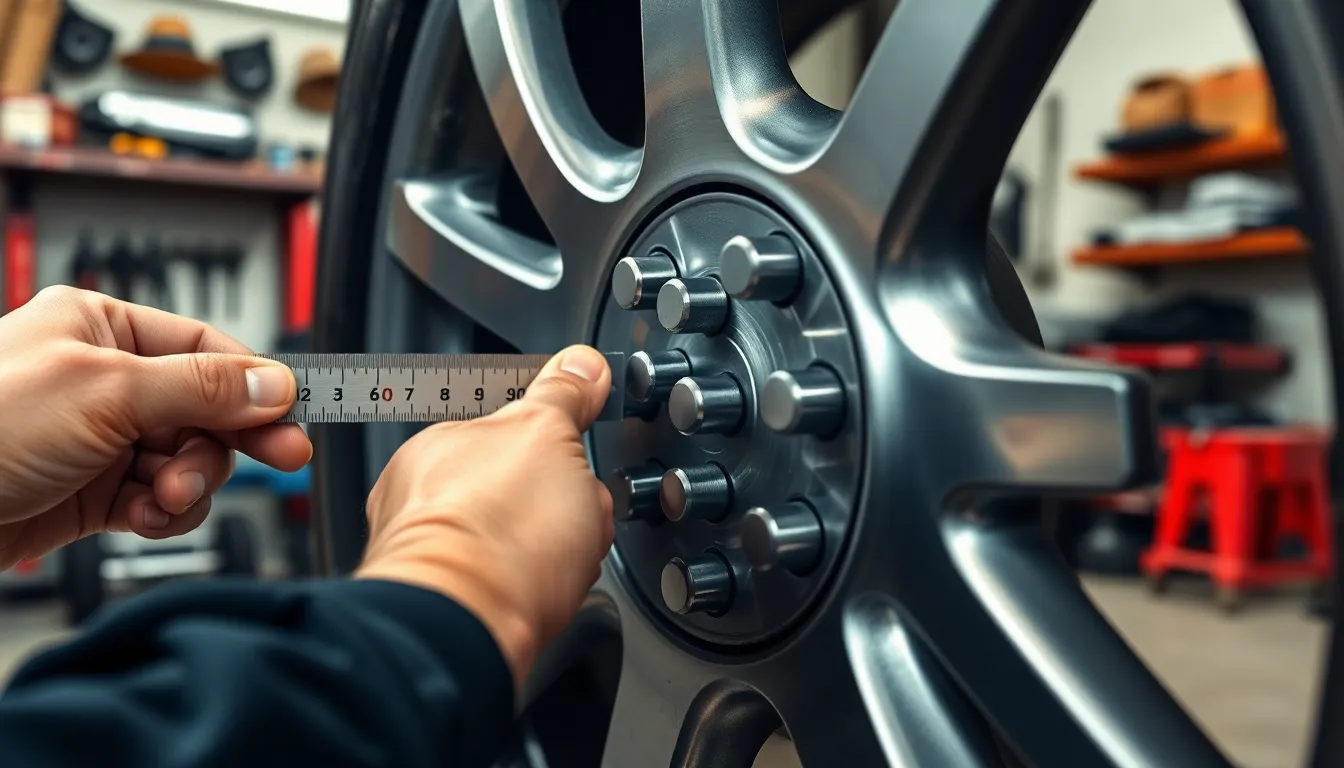
Finding your wheel bolt pattern requires accurate measurement techniques that vary based on the number of lug holes. We’ll examine the most reliable measurement methods for different bolt configurations to ensure precise results.
Measuring 4-Lug Bolt Patterns
Measuring 4 lug bolt patterns offers the most straightforward process among all configurations. Locate the center of one lug hole and measure directly across to the center of the opposite hole using a ruler or measuring tape. This center to center measurement provides your bolt pattern diameter since 4 lug wheels form a perfect square or rectangle. Record the measurement in both inches and millimeters for universal compatibility when shopping for wheels.
Measuring 5-Lug Bolt Patterns
Measuring 5 lug bolt patterns requires a different approach since no holes sit directly opposite each other. Position your measuring tool from the back edge of one lug hole to the center of the hole positioned across from it on the opposite side. Alternatively, measure the distance between the centers of two adjacent lug holes and consult a bolt pattern reference chart to determine the exact circle diameter. Common 5 lug patterns include 5×114.3mm for many sedans and 5x120mm for BMW vehicles.
Measuring 6 and 8-Lug Bolt Patterns
Measuring 6 and 8 lug bolt patterns follows the same principle as 4 lug configurations due to their even number arrangement. Identify one lug hole center and measure straight across to the center of the directly opposite hole for your bolt circle diameter. Six lug patterns commonly measure 6×139.7mm on trucks and SUVs while 8 lug patterns typically range from 8×165.1mm to 8x200mm on heavy duty vehicles. Double check your measurements since these larger patterns often appear on commercial vehicles requiring precise fitment for safety reasons.
Using Your Vehicle’s Documentation
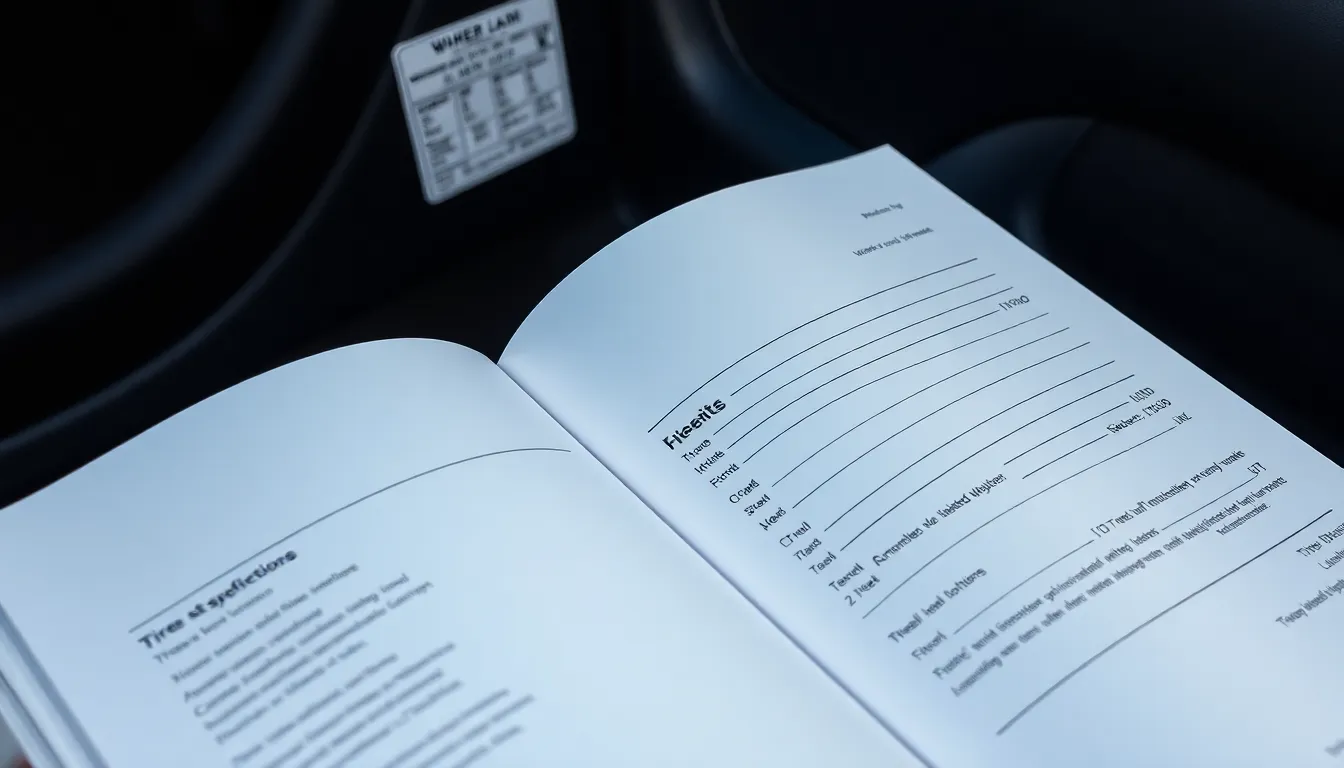
We can find your vehicle’s wheel bolt pattern through several documentation sources without taking physical measurements. These methods provide the most accurate information and eliminate guesswork from the process.
Owner’s Manual Information
Your vehicle’s owner’s manual contains comprehensive wheel specifications in the tire information section. Most manufacturers include bolt pattern details alongside tire size recommendations and pressure specifications. The manual typically lists the pattern using standard notation such as 5×114.3 or 4×100.
Locate the maintenance section or appendix where tire and wheel specifications appear. Some manuals organize this information under “Specifications” or “Technical Data” chapters. Keep your manual accessible since it serves as the primary reference for all wheel-related modifications.
Door Jamb Stickers and VIN Lookup
Driver’s side door jamb stickers display essential tire and wheel information including bolt patterns. These certification labels appear on the door frame when you open the driver’s door. The sticker shows tire size, recommended pressure, and often includes the bolt pattern specification.
Check inside the fuel filler door for additional stickers containing wheel specifications. Some manufacturers place secondary labels in this location with detailed fitment information.
Your VIN provides access to complete vehicle specifications through online databases. Enter your 17-character VIN into automotive websites like TireSize.com or DiscountTire.com to retrieve exact bolt pattern information. These platforms maintain comprehensive databases linking VIN numbers to factory wheel specifications.
Government databases like the National Highway Traffic Safety Administration (NHTSA) also provide VIN lookup services for safety and specification data. Dealership parts departments can access manufacturer databases using your VIN to confirm bolt pattern details when other methods prove unclear.
Online Tools and Resources

Digital platforms and specialized databases provide convenient alternatives to manual measurements for identifying wheel bolt patterns. We’ve compiled the most reliable online resources that deliver accurate specifications for your vehicle.
Manufacturer Websites
Manufacturer websites offer the most authoritative source for bolt pattern specifications and technical documentation. We recommend checking your vehicle manufacturer’s official website first since they maintain comprehensive databases with exact measurements for every model year. These sites typically include downloadable owner’s manuals in PDF format that contain complete wheel specifications including bolt patterns, offset measurements, and recommended tire sizes.
OEM parts catalogs on manufacturer websites also display detailed wheel specifications when you enter your VIN or select your exact vehicle model. Honda, Toyota, Ford, and General Motors maintain particularly robust online specification databases that allow you to search by year, make, model, and trim level for precise measurements.
Wheel Fitment Databases
Specialized wheel fitment databases like Wheel-Size.com provide cross-referenced bolt pattern information for thousands of vehicle models across multiple decades. These platforms aggregate manufacturer data and create searchable databases where you can enter your vehicle details to find compatible wheel specifications.
1010TIRES and Discount Tire maintain comprehensive fitment guides that include bolt pattern measurements alongside offset and diameter specifications. These resources often display multiple compatible bolt patterns for vehicles that accept various wheel configurations.
TireRack’s online fitment tool combines bolt pattern data with performance recommendations based on your driving style and vehicle type. The platform provides detailed compatibility charts that show which aftermarket wheels match your exact bolt pattern requirements.
WheelPros database offers professional-grade fitment information used by tire shops and wheel retailers nationwide. This resource includes rare and vintage vehicle specifications that might not appear in standard manufacturer documentation.
Common Bolt Pattern Sizes by Vehicle Type
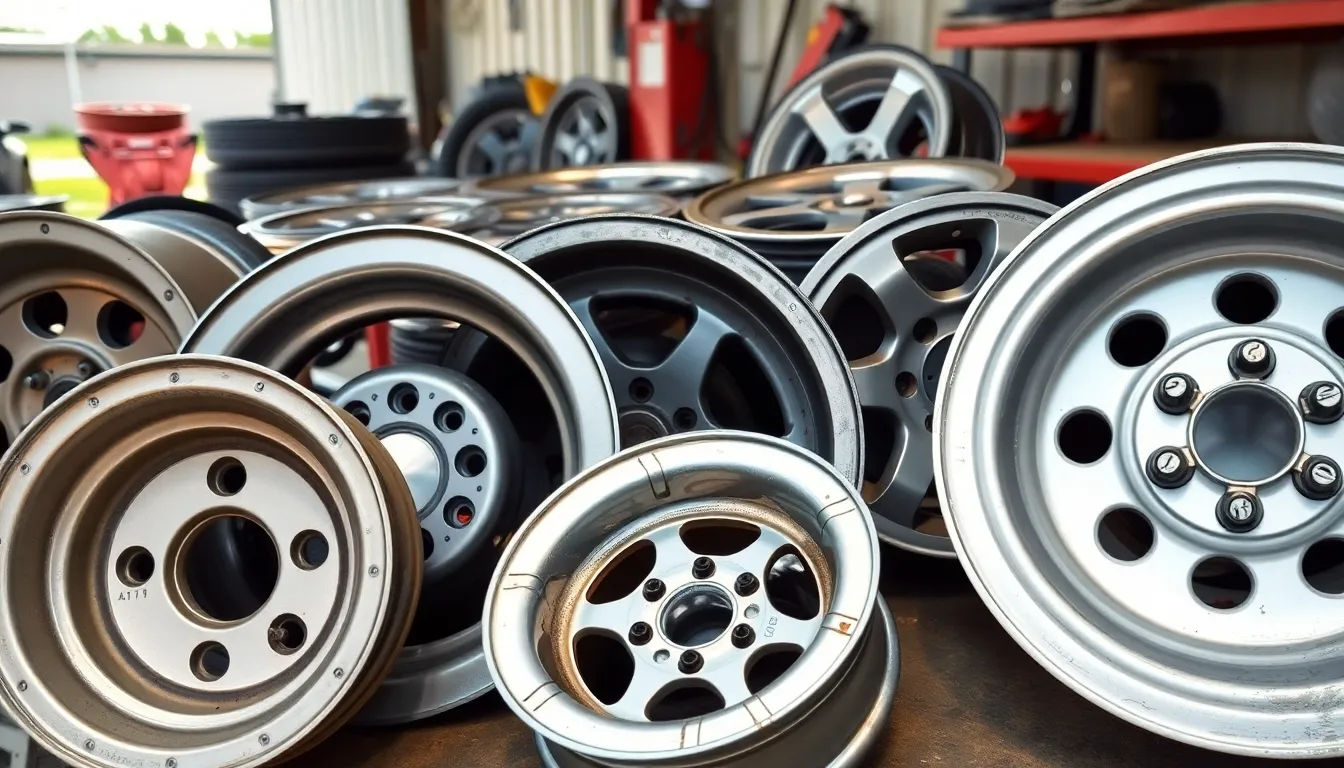
Passenger cars and small SUVs typically feature 4 or 5 lug hole configurations with bolt circle diameters ranging from 100mm to 114.3mm. Most sedans use the popular 5×114.3mm pattern, while compact vehicles often employ 5x100mm specifications for optimal weight distribution.
Larger SUVs, trucks, and vans commonly use 6 or 8 lug patterns with significantly larger bolt circle diameters spanning from 114.3mm to over 200mm. Heavy duty applications require these robust configurations to handle increased payload capacities and towing demands.
| Vehicle Category | Common Bolt Patterns | Diameter Range |
|---|---|---|
| Compact Cars | 4x100mm, 5x100mm | 100mm |
| Mid-size Sedans | 5×114.3mm, 5x120mm | 114.3-120mm |
| Light Trucks | 6×114.3mm, 6×139.7mm | 114.3-139.7mm |
| Heavy Duty Trucks | 8×165.1mm, 8x200mm | 165.1-200mm |
Popular 5 lug patterns include 5x100mm for many Honda and Toyota models, 5×114.3mm for Ford and Nissan vehicles, and 5x120mm primarily used by BMW manufacturers. These measurements represent the most frequently encountered specifications across automotive platforms.
Six lug configurations appear predominantly on pickup trucks and larger SUVs, with 6×114.3mm serving Mazda and some Ford applications while 6×139.7mm dominates Chevrolet and GMC truck lineups. Commercial vehicles often specify these patterns for enhanced durability under demanding conditions.
Eight lug patterns exclusively serve heavy duty applications, featuring 8×165.1mm on many Chevrolet and GMC trucks alongside 8x200mm specifications for commercial grade vehicles. These robust configurations distribute substantial loads across multiple attachment points for maximum safety margins.
Dual bolt pattern wheels accommodate multiple vehicle specifications by incorporating two distinct hole arrangements within a single rim design. Manufacturers create these versatile options to expand compatibility across different automotive brands while maintaining structural integrity and safety standards.
Professional Help and When to Seek It
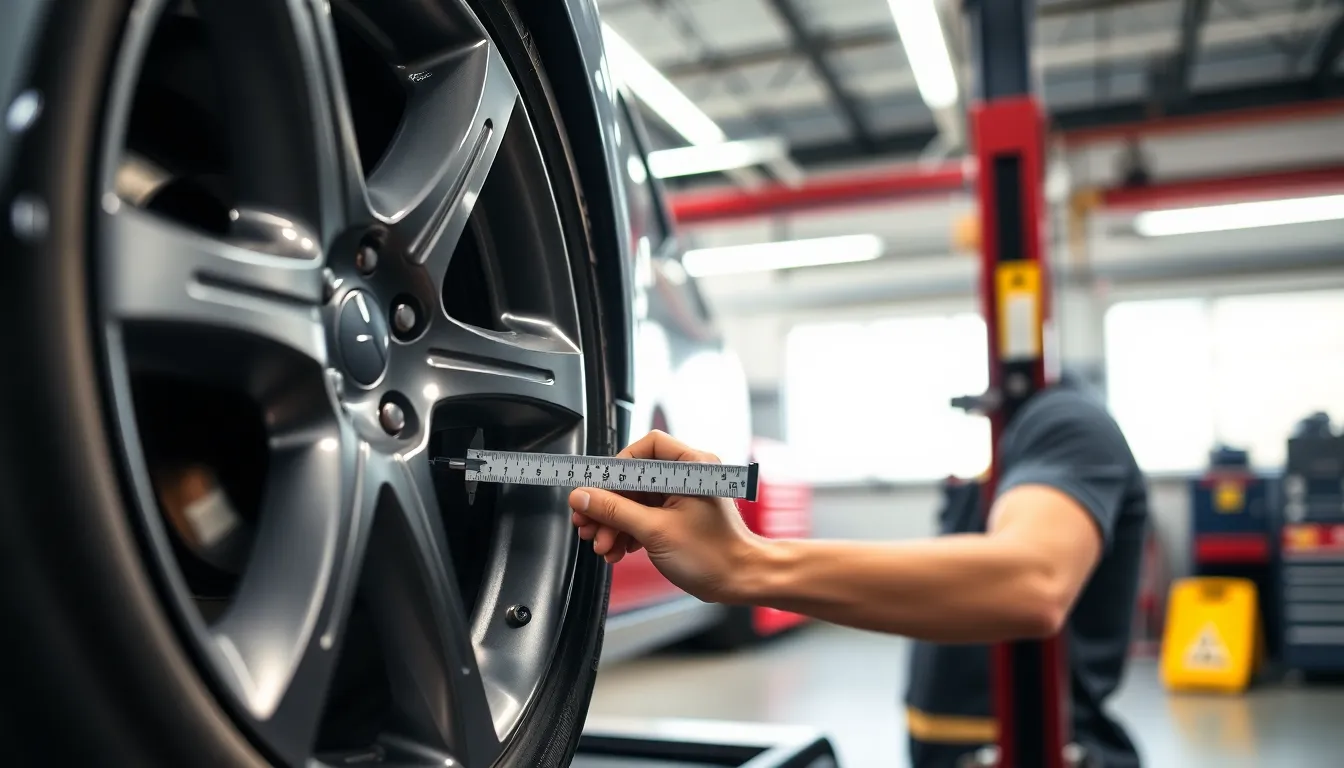
Tire shops and automotive service centers offer professional bolt pattern measurement services that guarantee accuracy for wheel fitment decisions. Experienced technicians use specialized tools like bolt pattern gauges and precision calipers to measure patterns within 0.1mm tolerance. These professionals can identify unique bolt patterns that appear on specialty vehicles or aftermarket modifications that standard measurement techniques might miss.
Complex vehicle configurations require professional expertise to ensure proper wheel selection. Vehicles with dual bolt patterns demand precise measurements to determine which pattern provides optimal fitment for exact wheel designs. Modified suspension systems often alter original bolt patterns and create measurement challenges that automotive professionals handle with specialized equipment.
Professional measurement becomes essential when purchasing expensive aftermarket wheels that cost $200 to $2,000 per wheel. Automotive shops typically charge $15 to $30 for bolt pattern verification services that prevent costly purchasing mistakes. This investment protects against restocking fees that range from 15% to 25% of wheel purchase prices.
Consultation with wheel specialists provides access to fitment databases that contain thousands of vehicle specifications and compatibility charts. These experts recommend wheel options based on your vehicle’s exact bolt pattern and can identify performance wheels that enhance handling characteristics. Professional guidance ensures compliance with manufacturer load ratings and safety standards that protect against wheel failure.
Emergency situations require immediate professional assistance when bolt pattern uncertainty affects vehicle safety. Mechanics can quickly identify bolt patterns during tire changes or wheel repairs to maintain proper vehicle operation. Professional verification prevents installation of incompatible wheels that create dangerous driving conditions or suspension damage.
| Professional Service | Cost Range | Time Required | Benefits |
|---|---|---|---|
| Bolt Pattern Measurement | $15-$30 | 10-15 minutes | Precision accuracy, tool access |
| Wheel Fitment Consultation | $25-$50 | 20-30 minutes | Expert recommendations, database access |
| Installation Verification | $40-$80 | 30-45 minutes | Safety compliance, proper torque specs |
Professional services become necessary when dealing with vintage vehicles that feature discontinued bolt patterns or custom applications. Specialists maintain historical databases that contain bolt pattern information for vehicles dating back decades. These experts can source compatible wheels or recommend custom answers for unique fitment requirements.
Conclusion
Now that we’ve covered the essential methods for finding your wheel bolt pattern you’re equipped with the knowledge to make confident wheel purchasing decisions. Whether you choose to measure manually using simple tools or leverage online resources and professional services the key is ensuring accuracy before making any investment.
Remember that your vehicle’s bolt pattern isn’t just a number—it’s a critical safety specification that affects everything from wheel stability to suspension performance. Taking the time to verify this measurement upfront will save you money avoid returns and most importantly keep you safe on the road.
With these tools and techniques at your disposal you’ll never have to worry about ordering the wrong wheels again. Your next set of rims will fit perfectly and perform exactly as intended.
Frequently Asked Questions
What is a wheel bolt pattern?
A wheel bolt pattern represents the arrangement of bolt holes on your vehicle’s wheel hub that secures the wheel to the axle. This measurement consists of two components: the number of bolt holes (typically 4, 5, 6, or 8) and the diameter of the circle they form. Each vehicle has a unique bolt pattern designed for proper weight distribution and structural integrity.
Why is knowing my bolt pattern important?
Knowing your bolt pattern prevents expensive purchasing mistakes and ensures safe driving conditions. Incorrect bolt patterns can cause wheels to detach while driving, creating serious safety risks. It also saves money on restocking fees and shipping costs from returns, while ensuring optimal wheel performance and proper suspension geometry.
How do I measure a 5-lug bolt pattern?
For 5-lug patterns, measure from the back edge of one lug hole to the center of the hole across from it. Alternatively, you can measure between adjacent holes and use conversion calculations. Common 5-lug patterns include 5×114.3mm for many sedans and 5x100mm for compact vehicles.
Where can I find my vehicle’s bolt pattern without measuring?
Check your owner’s manual for comprehensive wheel specifications, look at the driver’s side door jamb sticker for tire and wheel information, or use VIN lookup services through online databases. Manufacturer websites also provide authoritative bolt pattern specifications for your specific vehicle model.
What are the most common bolt patterns for different vehicle types?
Passenger cars typically use 4 or 5 lug patterns (100mm-114.3mm diameter). Compact cars often have 5x100mm, mid-size sedans use 5×114.3mm, and luxury vehicles may use 5x120mm. Light trucks commonly feature 6×139.7mm, while heavy-duty trucks use 8×165.1mm or larger patterns.
Can I use wheels with a different bolt pattern?
No, you should never use wheels with an incorrect bolt pattern. This creates dangerous driving conditions as wheels may not secure properly and could detach while driving. Always verify exact bolt pattern compatibility before purchasing aftermarket wheels to ensure safety and proper fitment.
When should I seek professional help for bolt pattern measurement?
Consider professional help for complex vehicle configurations, expensive aftermarket wheels, vintage vehicles with discontinued patterns, or modified suspensions. Tire shops offer specialized tools and expertise to ensure precise measurements, preventing costly mistakes and ensuring safety compliance with expert recommendations.

